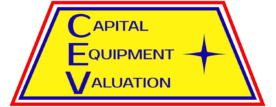How Is the “Scope” of Your Equipment Appraisal Defined?
The “Scope of an Appraisal” includes all of the important details and expectations of the appraisal assignment. The scope of work necessary to produce credible results will vary according to the valuation assignment. Some steps, however, are crucial to any assignment.
Property To Be Appraised
The property to be appraised is often referred to as the “subject property.” The questions to consider regarding the subject property include not only what property is to be appraised but also what assets are excluded from the appraisal. It is important to identify both included and excluded assets because the scope of the appraisal may not be obvious. Take for example, a complicated appraisal subject such as a complex industrial plant. Is the land excluded? If the land is included, who will appraise it? Does the appraisal include assets at more than one location?
Purpose of the Appraisal
The purpose of the appraisal is essential to the identification of any intended users of the report. Is the purpose to determine fair market value in continued use, orderly liquidation value, or some other kind or level of value? It is essential that any intended user of the appraisal understand the purpose.
Intended Uses of the Appraisal
The intended use of an appraisal is established by the client. The client’s use may encompass requirements of one or more intended users. An appraiser cannot identify the client’s intended use without having identified the client and having established a clear understanding of the client’s requirements by communicating with the client or the client’s agent. To avoid misunderstandings, the appraiser and client must have a mutual of the uses of the appraisal report before the appraiser begins the work.
Definition of Value
While the intended use of the appraisal is determined by the client, the value definition is determined or accepted by the appraiser, after clear communication with the client regarding the intended use and other circumstances surrounding the appraisal requirement.
Effective Date
The appraisal must be “as of” a specific date because values are constantly changing. The effective date is the date the correlates to the value conclusions, not the date when the appraisal was started or completed (although effective date could be either one of those dates). Sometimes a retroactive date is important, such as in inheritance tax cases (i.e., date of death).
Limiting Conditions
A report’s “statement of limiting conditions” limits the use of an appraisal or qualifies its conclusions. In addition to clarifying the meaning of the report for intended users, the limiting conditions could also be important to limiting the appraiser’s liability.
